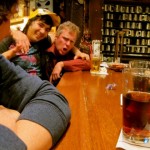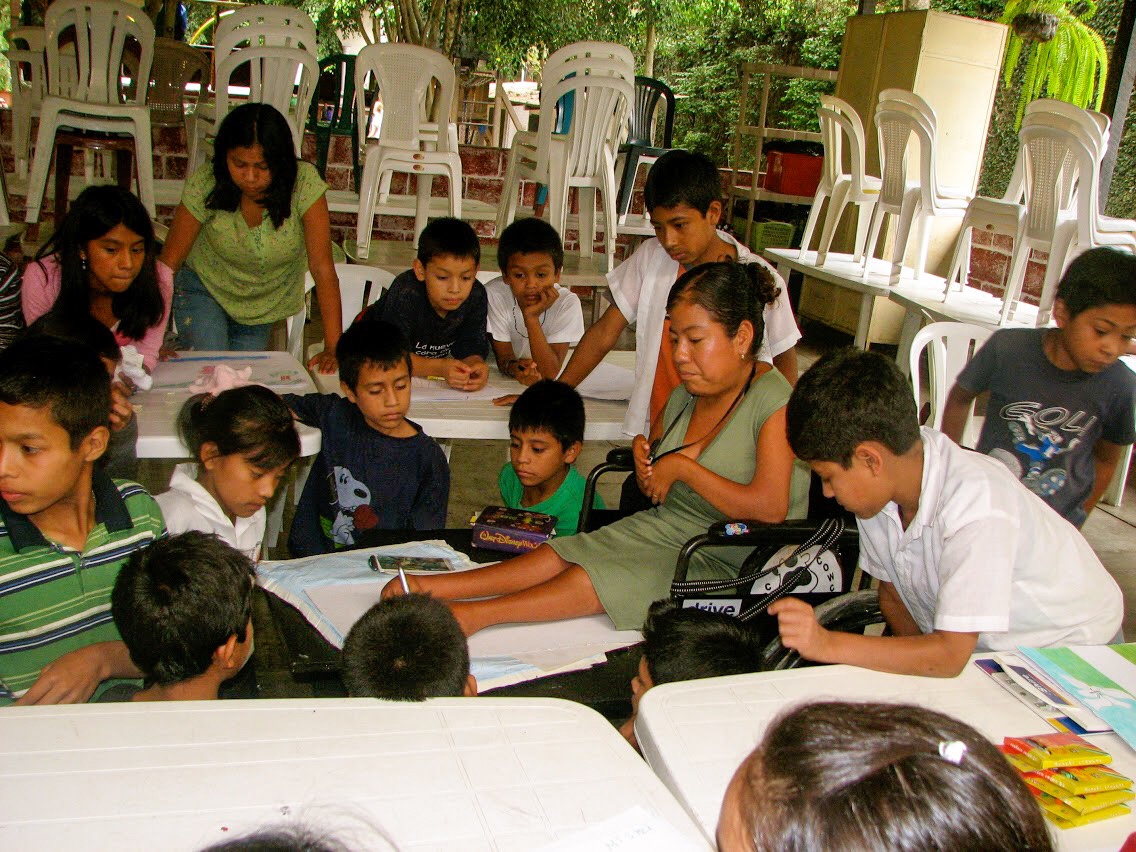
Twenty children sat around a rectangle of plastic tables and listened to the leader of their after-school youth club. It was not easy to hold these kids’ attention, but Neto had a gift for it. He was a social worker for a Guatemalan based educational charity who grew up on the streets himself. He spoke to them in a way I never could, no matter how fluent my Spanish.
In front of the kids were crayons and five white pieces of paper. First he instructed them to draw a picture using their right hand.
“What if I’m left handed?” A girl named Gabriela asked.
“It doesn’t matter. I want you to use your right hand for the first drawing.” Ernesto replied.
After admiring the first set of pictures, he told them to draw a picture using their left hand.
He put his hand up to silence those who protest. “You will understand why later. For now, just do as I say.”
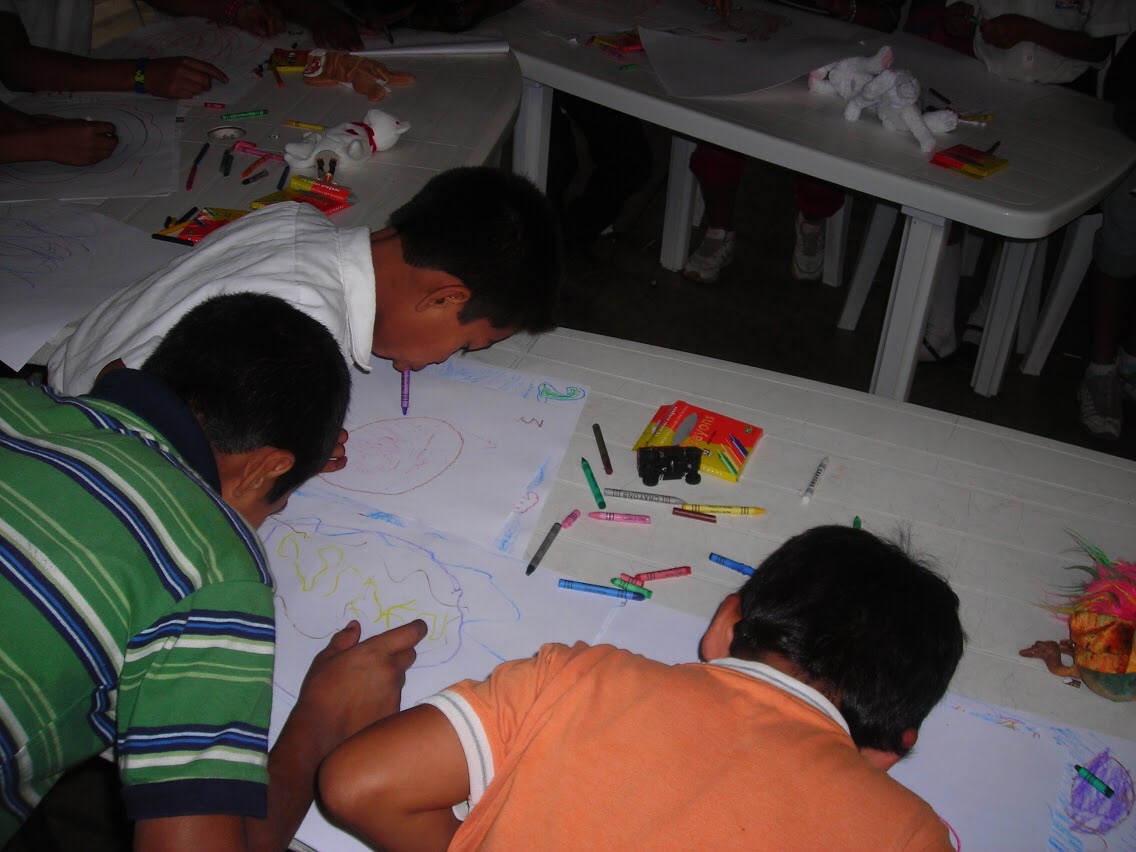
Then they draw a picture using their mouths to hold the crayons.
Afterwards they took off their shoes and use their left foot, then their right foot. The children laughed, wondering what Neto could possibly have up his sleeve this time.
I watch as Neto exited the room and returned pushing a young woman in a wheel chair. This woman had become a friend as over my time passing her in the Central Park. She had a magnetic presence about her.
He smiled coyly and pushed the chair to a table. “We have someone very special with us today. This is Marcia Garcia,” a few awkward chuckles were heard—either because her name rhymes, or because of her obvious physical deformities, “she is going to be talking to you today.”
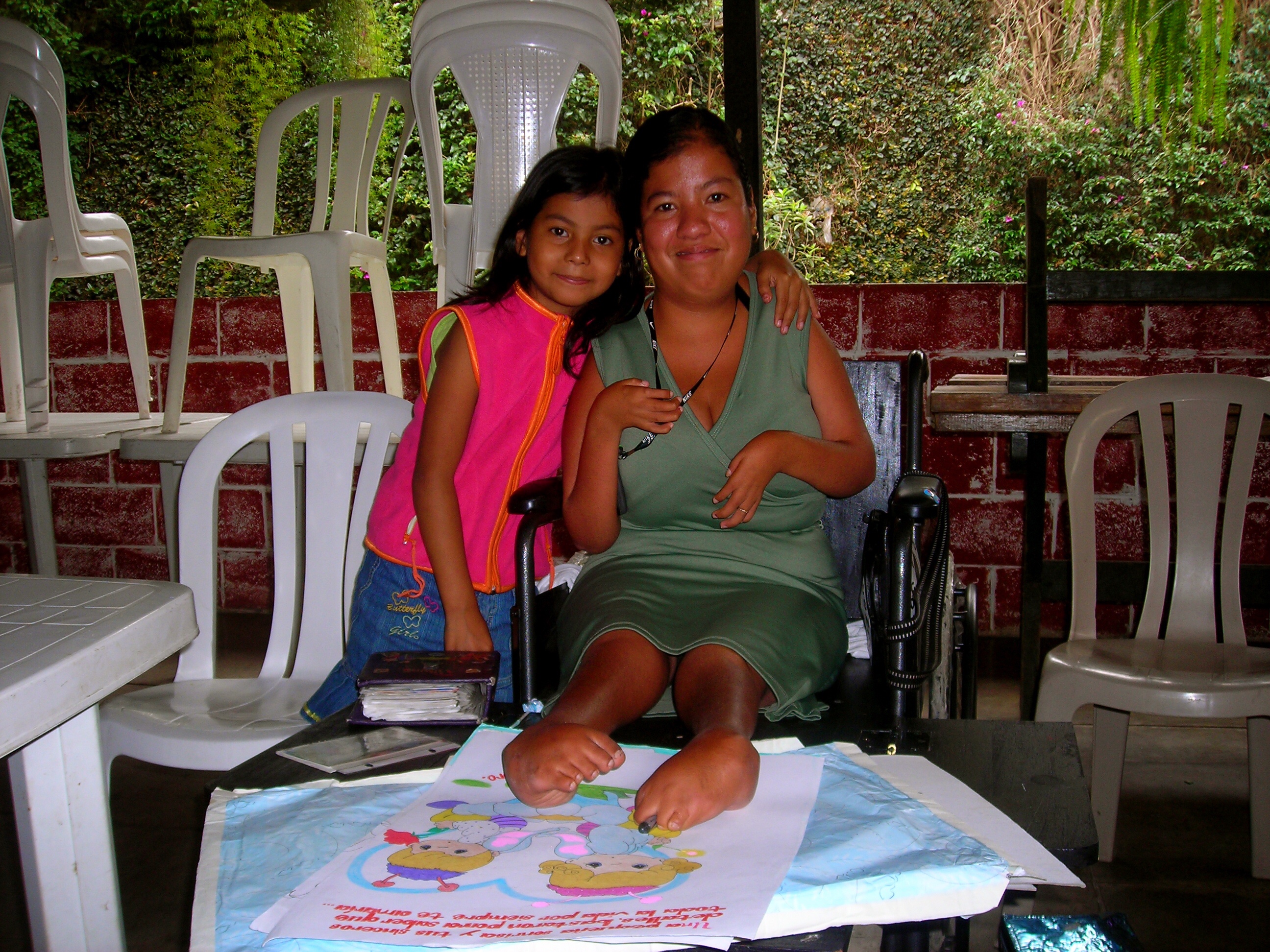
Marcia sat gracefully in front of them with a meek smile on her face. She seems confident with an inner light and strength to her. To her right, is her daughter, who displays an uninhibited happiness at her mother being the center of attention.
After the introduction, Neto asked the kids what they wanted to do in the future. A few soccer players. A policeman. Two teachers. A fireman. The rest, artists.
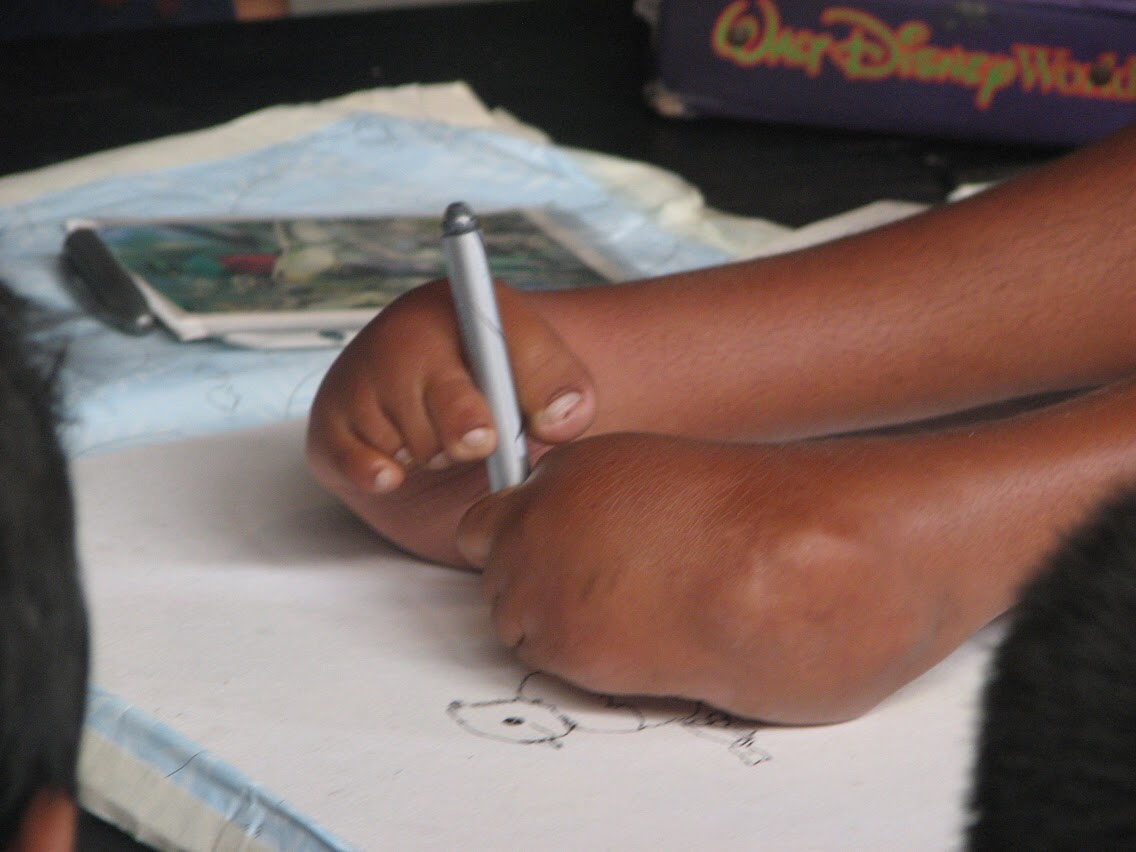
“Well,” he continued, “what are you going to do today to make those plans happen tomorrow?” The preteens shifted in their chairs.
Marcia looked to the young faces and begins to speak, “I was born like this,” her voice rises and everyone hushes. Her confidence voice catches them off guard. Marcia’s motioned with her malformed arms, “When I was eight years old, I decided I wanted to paint. I decided I wanted to be an artist.” The children eyes her arms suspiciously.
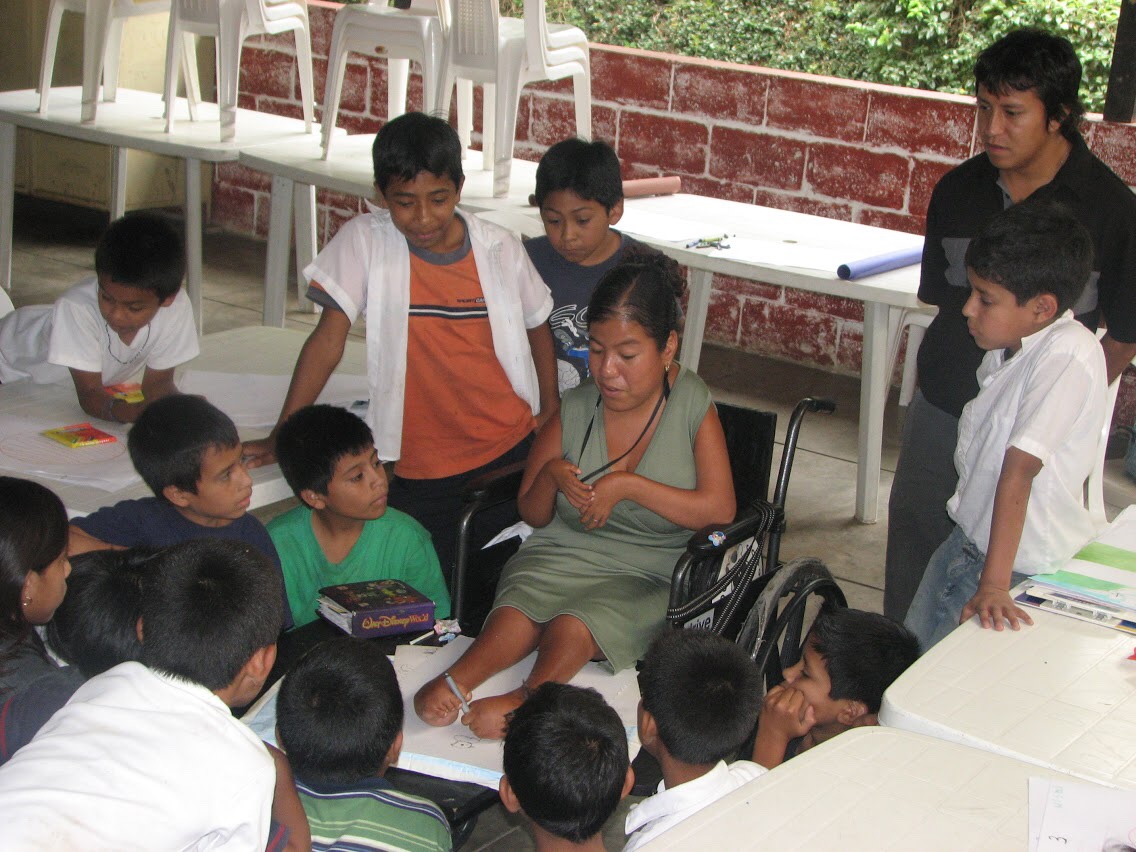
None of these children had been sheltered from life’s uneven draws. They themselves all came from at best extreme poverty, at worst abuse, abandonment and sexual exploitation. They had all seen deformity begging on the streets and they knew pain and hardship’s drill.
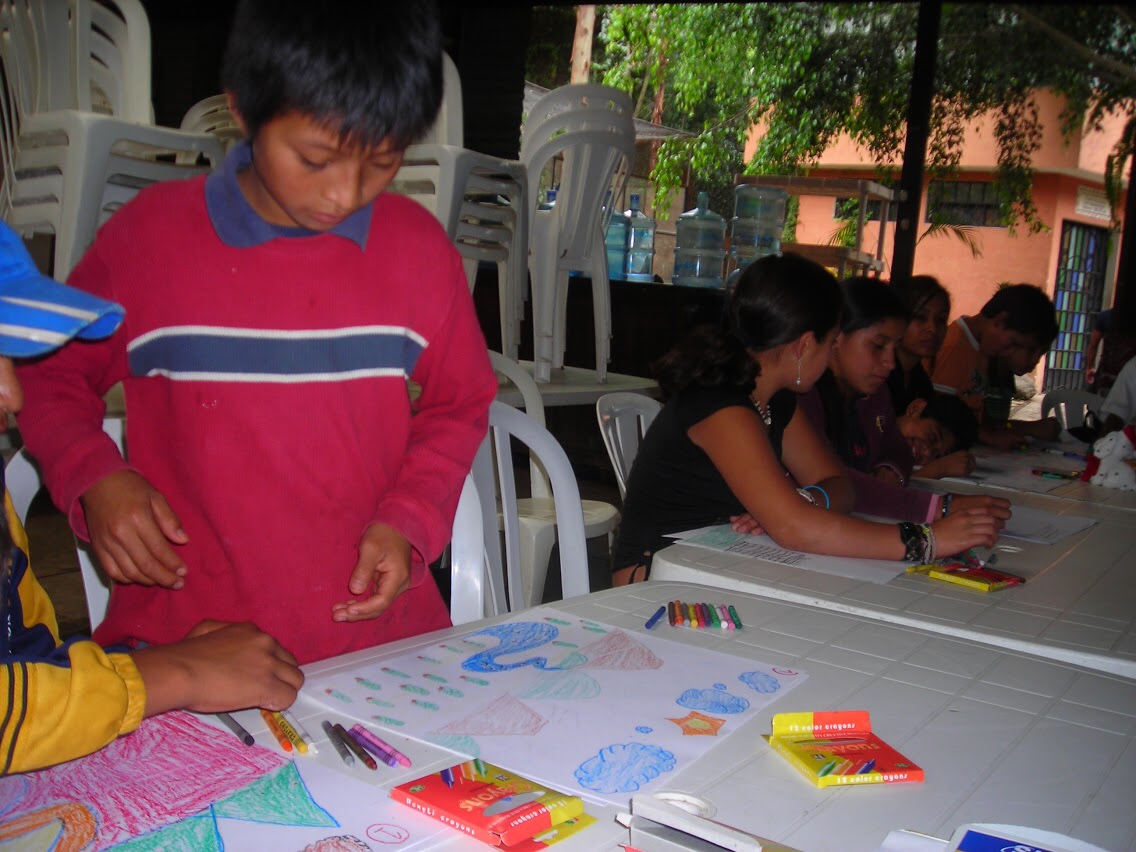
Marcia was born with stunted arms and legs. Her arms were so impaired she could even comb her own hair or eat without aid. They allowed only a two-inch range of motion. Her legs measured less than two feet. Her daughter, who was born healthy, stood faithfully at her mother’s side.
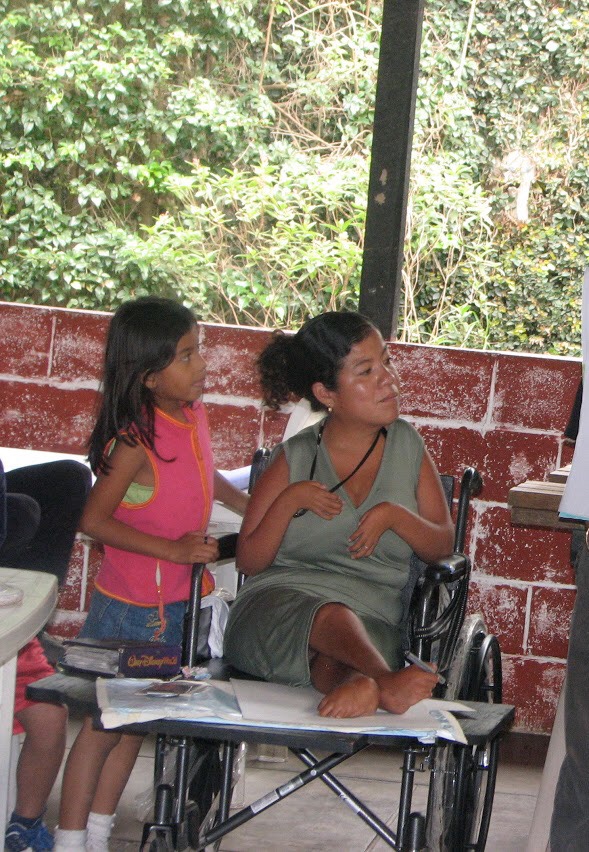
Guatemala is a country where the past invokes few positive memories and Marcia speaks little about her own. She tells them nothing about the fact that the daughter standing beside her was the result of a rape that occurred when she was eighteen. She doesn’t tell them how much she and her mother struggled—how Marcia used to loath herself and think that her mother’s poverty was all her fault. She doesn’t tell them how her father left rather than raise a deformed infant.
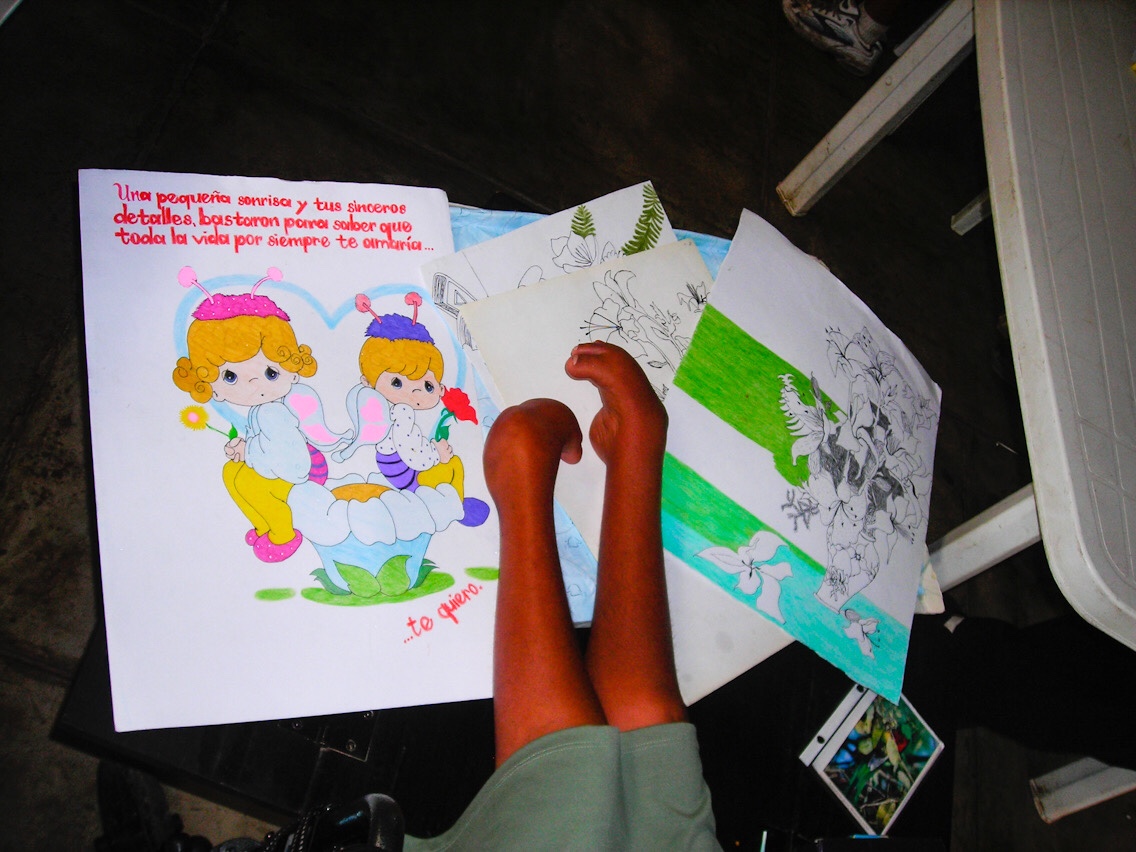
All these things are past and not the message she came to deliver to the youth club. Instead, she told them: “You are all intelligent and gifted. If you want to do something, you can. Nothing is impossible if you work hard and stay away from bad influences and drugs. You look at some in our streets and you see people without homes, without families, and they are using drugs. They have forgotten to believe in their dreams and now they suffer. When you lose your dreams, you lose everything.”
The children remained quiet; most had only just regained their ability to dream. The first part of their lives consisted of securing their immediate needs: filling their stomachs and finding shelter. Marcia knew this and does not sugarcoat anything. “Life is always hard. But it’s also beautiful. If you don’t give up when it gets hard, you will find the beauty in it.”
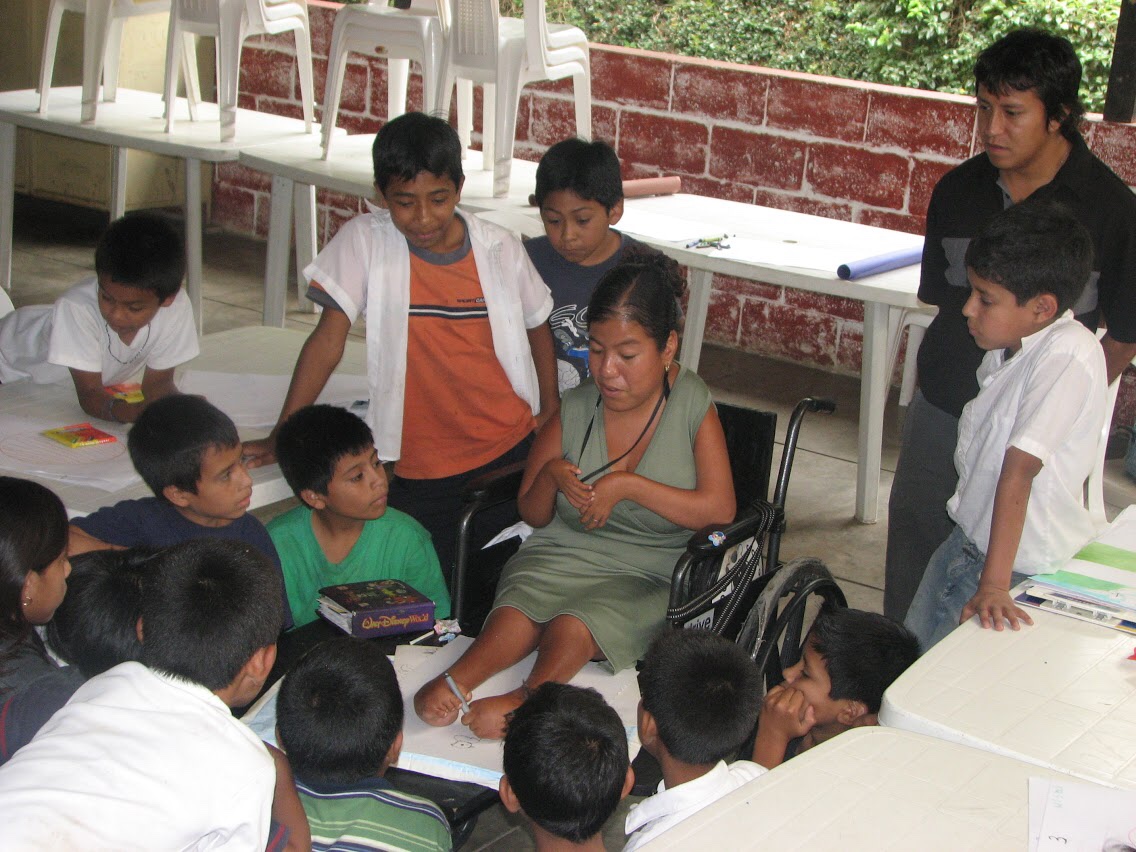
She looked lovingly at her daughter and then at everyone of the kids surrounding her, “If you have a goal, you can do it. Nothing will stop you.”
Before Marcia showed the children how she draws, Neto explains his exercise, “We started with the right hand, and then the left hand, and then we drew with our mouths and feet. Do you remember how hard it was to draw with your feet? That’s how difficult it was for Marcia to be able to draw with her feet when she first started drawing.” Everyone glanced self-consciously at the colored pencil resting between Marcia’s two twisted toes.
“But you know what,” Neto commands their full attention, “she had a dream and she had the determination to follow that dream.” He takes one of the children’s mouth drawings and he holds it up, “See this drawing? It is beautiful. All your drawings are beautiful. They are beautiful because they came from you and you are beautiful.”
He told everyone to watch as Marcia began. The children ducked under the tables and surrounded her wheel chair. The chair had a specially placed tray that allowed Marcia to draw with her legs. They watched in silence as Marcia’s toes picked up a red pencil with her right foot and used her left foot stabilize herself. As she pressed the pencil to the paper, every faces had the same expression on it—a look of young people realizing an important truth for the first time.
From a blank sheet emerged the a scenic portrait of the volcano that boarders the city of Antigua, Guatemala. Color by color a picture everyone agreed was beautiful was completed.
“Wow, that’s beautiful,” said a boy named Sergio, “can you teach me how to draw like that?” Marcia smiled and thanked him. She hoped she has taught Sergio something far more important than how to draw a volcano.
Post Script:
This piece was written in 2009–the following year, Marcia Garcia lived in passed away.
During her lifetime she encouraged everyone to find what makes him or her happy and to follow that. This is how she found happiness in her life, and I hope her message continues.
***
Hey there friend! Thank you for stopping by my blog. You can support me and my writing my checking out my latest book “All the Beloved Known Things“
Or check out my book of non-fiction travel adventures, “The Nomad’s Nomad“
Find me on Facebook at: Author Luke Maguire Armstrong
IG: @LukeSpartacus
And please check out my music on Bandcamp 🙂

